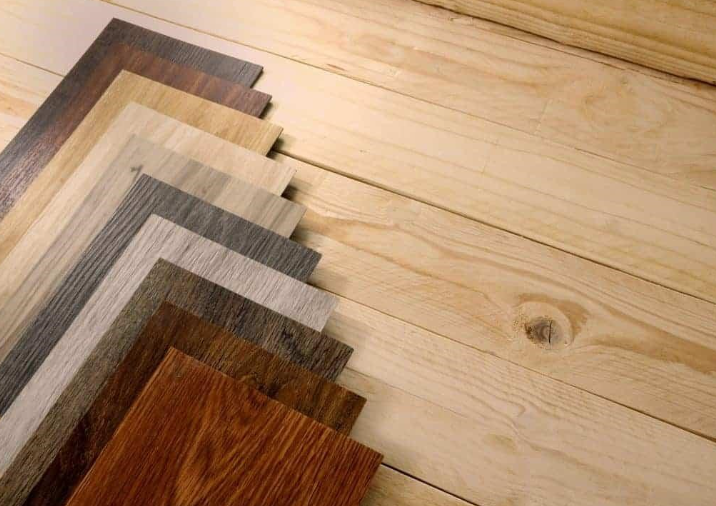
Common Mistakes to Avoid When Installing New Floors
Installing new flooring in your home is one of the best ways to boost both the look and value of your space. Whether you’re dreaming of cozy hardwoods, stylish tiles, or practical vinyl, the right flooring can completely transform a room. But as exciting as it sounds, flooring installation is no small feat—and making mistakes can cost you time, money, and frustration.
At Cyndi’s Floors N More, we’ve seen it all. From DIY disasters to professional mishaps, we’ve helped countless homeowners recover from common flooring mistakes. If you’re planning a flooring project, this guide will walk you through the most common pitfalls and how to avoid them.
1. Skipping Proper Subfloor Preparation
The Mistake:
Many homeowners are eager to lay down new flooring and forget to properly prep the subfloor underneath. A bumpy, uneven, or damp subfloor can ruin your new floors—even if the top layer looks fine at first.
Why It Matters:
A poorly prepared subfloor can lead to squeaks, shifting tiles or planks, and even mold growth in the long run.
How to Avoid It:
-
Clean the subfloor thoroughly to remove debris.
-
Level any uneven areas using a leveling compound.
-
Inspect for moisture, especially in basements or bathrooms.
-
Repair damage like cracks or rot before moving forward.
At Cyndi’s Floors N More, we always evaluate and prep the subfloor as a crucial first step in any flooring installation project.
2. Choosing the Wrong Type of Flooring for the Room
The Mistake:
Some people pick flooring based only on looks, without considering functionality. For example, installing hardwood in a moisture-prone bathroom can lead to major issues down the line.
Why It Matters:
Each room in your home has different needs. Bathrooms need water-resistant materials, while living rooms may benefit from warmer, softer flooring.
How to Avoid It:
-
Use tile or waterproof vinyl in kitchens and bathrooms.
-
Choose hardwood or engineered wood for living spaces and bedrooms.
-
Opt for carpet or padded vinyl in playrooms and nurseries.
-
Always consider pets, kids, and furniture when choosing.
Need help deciding? Our experts at Cyndi’s Floors N More can help match your lifestyle to the right flooring material.
3. Not Allowing Flooring to Acclimate
The Mistake:
Many DIYers (and even some pros) skip the step of letting the new flooring acclimate to the room’s temperature and humidity before installation.
Why It Matters:
Materials like hardwood and laminate expand and contract with changes in temperature and moisture. Installing them immediately can lead to warping or gaps later.
How to Avoid It:
-
Leave your flooring in the room for 48–72 hours before installation.
-
Keep the HVAC system running so the environment stays stable.
-
Stack boxes of planks flat and open to airflow.
4. Ignoring Expansion Gaps
The Mistake:
Floorboards are installed too tightly against the walls, leaving no room for natural expansion.
Why It Matters:
Without space to expand, flooring can buckle or warp over time, especially in climates with seasonal humidity changes.
How to Avoid It:
-
Leave a 1/4” to 1/2” expansion gap around the room’s perimeter.
-
Cover the gap with baseboards or shoe molding for a clean finish.
-
Use spacers during installation to keep gaps consistent.
5. Underestimating Material Waste
The Mistake:
Ordering flooring with exact measurements and no extra.
Why It Matters:
You’ll almost always need extra material to account for mistakes, pattern matching, or odd-shaped rooms.
How to Avoid It:
-
Add 10% extra for standard rooms.
-
Add 15% or more for rooms with angles, curves, or intricate layouts.
-
Keep leftover planks or tiles for future repairs.
At Cyndi’s Floors N More, we help our customers calculate exactly how much material they need to avoid last-minute shortages.
6. Using the Wrong Underlayment
The Mistake:
Skipping underlayment or using one that’s incompatible with your flooring type.
Why It Matters:
Underlayment adds insulation, moisture protection, and sound dampening. Using the wrong one can reduce your flooring’s lifespan or comfort level.
How to Avoid It:
-
Use foam or cork underlayment with laminate.
-
Use moisture barriers in basements or over concrete.
-
Check the manufacturer’s guidelines before selecting underlayment.
7. Poor Planning of Floor Layout
The Mistake:
Starting installation without a clear plan or layout.
Why It Matters:
Without proper layout planning, you may end up with uneven seams, small awkward cuts, or a lopsided room.
How to Avoid It:
-
Do a dry run to visualize the layout.
-
Center planks in the room for a balanced look.
-
Avoid ending rows with thin slivers of flooring.
-
Stagger joints between planks for natural variation.
8. Rushing Through the Installation
The Mistake:
Trying to complete the flooring installation too quickly—especially without reading the instructions or allowing glue or adhesive to set.
Why It Matters:
Flooring that isn’t properly installed can come apart over time, void warranties, or just look unprofessional.
How to Avoid It:
-
Follow the manufacturer’s instructions carefully.
-
Allow adhesives or finishes to dry and cure fully.
-
Take your time with cuts, seams, and transitions.
9. Skipping Professional Help When Needed
The Mistake:
Taking on a project that’s beyond your skill level just to save money.
Why It Matters:
Improper installation can cost more to fix later and even reduce your home’s resale value.
How to Avoid It:
-
Be honest about your skills and timeline.
-
Hire a professional for complicated materials (like hardwood, tile, or stairs).
-
Work with trusted flooring specialists like Cyndi’s Floors N More, who offer full-service installation and guidance.
10. Forgetting Post-Installation Care
The Mistake:
Not taking care of the new flooring after installation.
Why It Matters:
Every flooring type has unique care needs. Using the wrong cleaner or dragging furniture can cause damage.
How to Avoid It:
-
Use the recommended cleaning products.
-
Add protective pads under furniture legs.
-
Keep moisture away from wood or laminate floors.
-
Sweep or vacuum regularly to avoid scratching.
Our team at Cyndi’s Floors N More always educates homeowners on proper maintenance for long-lasting beauty and durability.
Bonus Tip: Don’t Forget Transitions and Trim
Transition strips between rooms and finishing trim around the edges can often be overlooked—but they make a big difference in the final look and performance of your flooring.
Final Thoughts
New flooring can dramatically elevate your home, but it’s not as simple as just laying down planks or tiles. From choosing the right material to ensuring proper installation, every step matters. Avoiding these common mistakes can help you enjoy flawless, long-lasting floors that look just as good years down the road.
Whether you’re planning a DIY project or hiring professionals, Cyndi’s Floors N More is here to help every step of the way. We provide expert advice, premium flooring materials, and full-service installation to make sure your project goes off without a hitch.
FAQs
Q1: How much extra flooring should I order?
It’s smart to order 10% more than you think you’ll need. This covers waste, cuts, and future repairs. If your room has unusual angles or curves, consider bumping that to 15%.
Q2: Can I install new flooring over existing floors?
In some cases, yes—especially with vinyl and laminate flooring. However, it’s best to consult a professional to ensure the subfloor is in good shape and compatible with a new layer on top.
Q3: How do I know which flooring is best for my lifestyle?
Start with your daily habits. Do you have pets or kids? Do you cook often? Do you prefer something cozy or easy to clean? At Cyndi’s Floors N More, we offer free consultations to match your lifestyle with the right flooring type.





